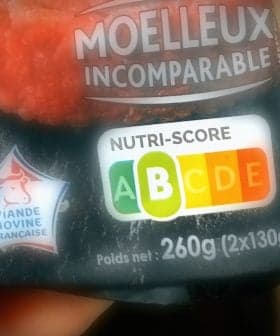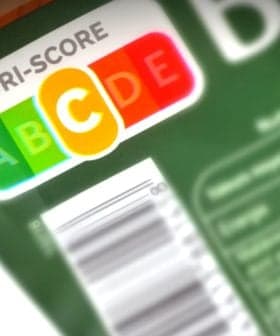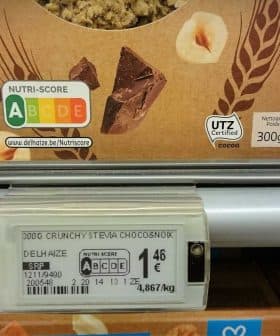Indian Consumers Reject Nutri-Score and Other Labels
A nationwide study conducted by the All India Institute of Medical Science found warning labels to be the most effective type of front-of-pack labels.
 Panaji, India
Panaji, India New research conducted by AIIMS in India suggests that implementing front-of-pack warning labels on food packages could greatly benefit consumers by informing them about potentially harmful contents, such as sodium, sugar, and saturated fats. The study found that Indian consumers prefer these warning labels over comparative ones like Nutri-Score, with 93 percent believing they should be mandatory on food products to guide their purchase decisions and improve public health.
New research demonstrates that Indian consumers would greatly benefit from introducing front-of-pack labels (FOPL) but prefer warning labels instead of comparative ones, such as Nutri-Score.
According to new research conducted by the All India Institute of Medical Science (AIIMS) and its local branches, the best results would be obtained by applying warning labels on the packages.
Research shows that labels which only highlight nutrients of concern, that is, warning labels, work best to safeguard public health.
These warnings would inform consumers about potentially harmful contents, such as sodium, sugar or saturated fats.
Similar labels are currently used in several countries, such as Peru, Chile, Mexico and Uruguay.
See Also:Health Professionals in France Endorse Widespread Adoption of Nutri-ScoreThe new study was conducted in fifteen Indian states by interviewing consumers from diverse backgrounds about nutritional logos applied to food packages.
The respondents were presented with several alternatives, such as Nutri-Score or the health-star rating system developed and used by several food producers.
The majority of the consumers chose the warning logos, the so-called “high-in” labels, and 93 percent of them said they believe those logos should be made mandatory on food.
According to the study’s authors, “high-in” labels represent an efficient way of informing consumers about the presence of potentially unhealthy contents of specific preparations.

The researchers explained that implementing this kind of label could positively impact the eating habits of the local population.
“As doctors, we are witnessing the debilitating impact caused by excessive consumption of foods high in salt, sugar and saturated fats, on the health of this country, particularly on our youth and children,” said Pradeep Agarwal, the physician at the AIIMS in Rishikesh.
“This observational survey has ascertained which type of label people find easiest to read and most helpful in guiding their purchase decisions,” he added.
Every year, 5.8 million Indians die from cardiovascular failure, cancer, diabetes and uncontrolled hypertension. Current projections estimate that 70 million Indians will have diabetes by 2024.
The Economic Times of India reported that AIIMS researchers believe that other labeling platforms, such as Nutri-Score or health-star ratings, “end up sending mixed and confusing signals to consumers.”
In their opinion, the first studies on the introduction of these labels conducted in Australia and New Zealand show that those labels “have not resulted in any public health gain.”
Vandana Shah, regional director of the global health advocacy incubator, said the front of pack warning labels (FOPWL) efficiently inform consumers while encouraging the industry to reformulate their products.
“Studies coming from Chile, which was one of the first countries to implement simple warning labels on packaged foods, are already showing a significant reduction in sugar and salt consumption leading the industry to take steps to make their products healthier,” Shah said.
“All of this has resulted in no economic or job losses for the food industry, creating a win-win situation for public health and industry,” he added.
According to AIIMS scientists, broader and more complete nutritional information on the labels is not as effective.
“Research shows that labels which only highlight nutrients of concern, that is, warning labels, work best to safeguard public health,” said Umesh Kapil, president of the Epidemiological Foundation of India.
“It is heartening to note that Indians have almost unanimously voted ‘high-in warning labels for salt, sugar, fats’ as the easiest to understand,” he added. “Front of pack warning labels can result in immediate public health benefits – all the more reason why India, which accounts for 25 percent of the global burden of heart disease, cannot afford not to get it right the first time.”
The Heart Foundation of India has already launched a campaign to promote the implementation of FOPWL in the country. Those logos are also globally sponsored by institutions including the Healthy Caribbean Coalition, the Pan American Health Organization and the United Nations.
According to the Pan American Health Organization, which is credited with the definition of the FOPWL nutrient profile model, “front-of-package warning labeling represents one of the key policy tools of a comprehensive strategy to regulate obesogenic environments.”
“Scientific evidence shows that octagon-shaped front-of-package nutritional warnings indicating if a product is ‘high in’ on one or more critical nutrients, is the best performing system to allow consumers to correctly, quickly, and easily identify products with unhealthy nutritional profiles,” the organization added.
FOPWLs warn consumers about the excessive presence of a given content in packaged food. For example, on some refined edible fats, containers display a black octagon reading “high in fat” or a “high in saturated fats” warning.
On the other hand, Nutri-Score rates foods from the healthiest “Green A” down to the “Red E” and allows consumers to compare different food items in the same category.
All olive oil grades receive a “Yellow C” from Nutri-Score, while most refined edible fats receive an “Orange D” or a “Red E.”
Currently, Nutri-Score is the front-runner among the FOPLs being considered by the European Commission for implementation throughout the European Union.
Share this article









